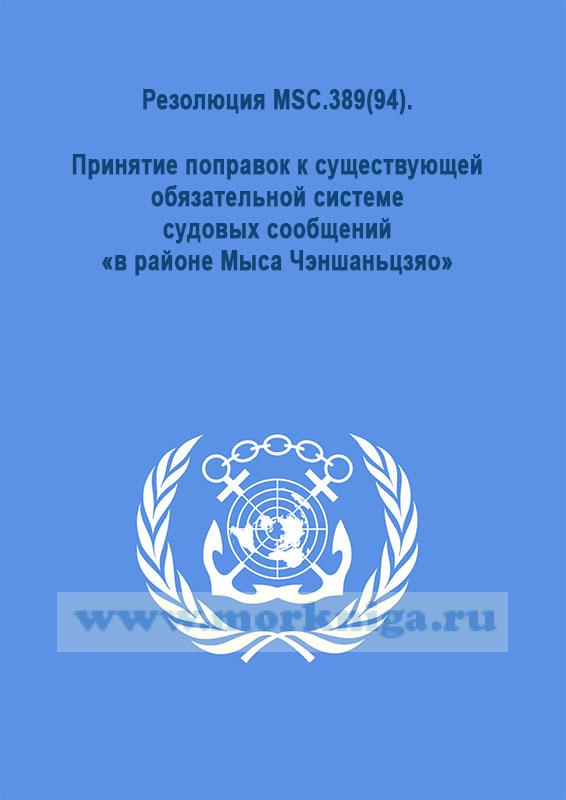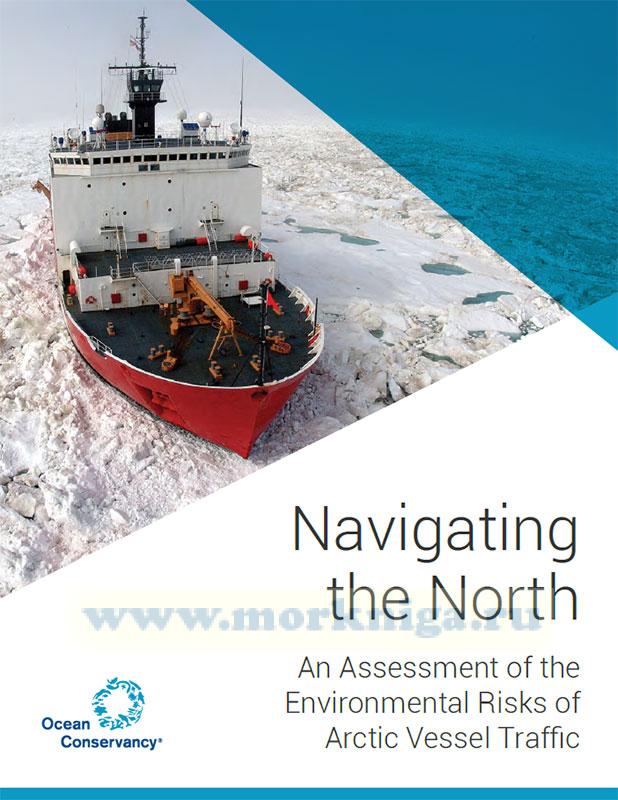Navigating the North, An Assessment of the Environmental Risks of Arctic Vessel Traffic. –Э–∞–≤–Є–≥–∞—Ж–Є—П –љ–∞ –°–µ–≤–µ—А–µ, –Ю—Ж–µ–љ–Ї–∞ —Н–Ї–Њ–ї–Њ–≥–Є—З–µ—Б–Ї–Є—Е —А–Є—Б–Ї–Њ–≤, —Б–≤—П–Ј–∞–љ–љ—Л—Е —Б –і–≤–Є–ґ–µ–љ–Є–µ–Љ –∞—А–Ї—В–Є—З–µ—Б–Ї–Є—Е —Б—Г–і–Њ–≤
-
 –†–µ–Ј–Њ–ї—О—Ж–Є—П MSC.114(73) –≠–Ї—Б–њ–ї—Г–∞—В–∞—Ж–Є–Њ–љ–љ—Л–µ —В—А–µ–±–Њ–≤–∞–љ–Є—П –Ї —Б—Г–і–Њ–≤–Њ–Љ—Г –њ—А–Є–µ–Љ–љ–Њ–Љ—Г –Њ–±–Њ—А—Г–і–Њ–≤–∞–љ–Є—О –і–ї—П –њ—А–Є–µ–Љ–∞ –Є–љ—Д–Њ—А–Љ–∞—Ж–Є–Є –Њ—В –Љ–Њ—А—Б–Ї–Є—Е —А–∞–і–Є–Њ–Љ–∞—П–Ї–Њ–≤, –њ–µ—А–µ–і–∞—О—Й
–†–µ–Ј–Њ–ї—О—Ж–Є—П MSC.114(73) –≠–Ї—Б–њ–ї—Г–∞—В–∞—Ж–Є–Њ–љ–љ—Л–µ —В—А–µ–±–Њ–≤–∞–љ–Є—П –Ї —Б—Г–і–Њ–≤–Њ–Љ—Г –њ—А–Є–µ–Љ–љ–Њ–Љ—Г –Њ–±–Њ—А—Г–і–Њ–≤–∞–љ–Є—О –і–ї—П –њ—А–Є–µ–Љ–∞ –Є–љ—Д–Њ—А–Љ–∞—Ж–Є–Є –Њ—В –Љ–Њ—А—Б–Ї–Є—Е —А–∞–і–Є–Њ–Љ–∞—П–Ї–Њ–≤, –њ–µ—А–µ–і–∞—О—Й
-
 –†–µ–Ј–Њ–ї—О—Ж–Є—П –Р.802(19) –≠–Ї—Б–њ–ї—Г–∞—В–∞—Ж–Є–Њ–љ–љ—Л–µ —В—А–µ–±–Њ–≤–∞–љ–Є—П –Ї —А–∞–і–Є–Њ–ї–Њ–Ї–∞—Ж–Є–Њ–љ–љ—Л–Љ –Њ—В–≤–µ—В—З–Є–Ї–∞–Љ —Б–њ–∞—Б–∞—В–µ–ї—М–љ—Л—Е —И–ї—О–њ–Њ–Ї –Є –њ–ї–Њ—В–Њ–≤ –і–ї—П –Є—Б–њ–Њ–ї—М–Ј–Њ–≤–∞–љ–Є—П –≤ –њ–Њ–Є—Б–Ї–Њ–≤–Њ-—
–†–µ–Ј–Њ–ї—О—Ж–Є—П –Р.802(19) –≠–Ї—Б–њ–ї—Г–∞—В–∞—Ж–Є–Њ–љ–љ—Л–µ —В—А–µ–±–Њ–≤–∞–љ–Є—П –Ї —А–∞–і–Є–Њ–ї–Њ–Ї–∞—Ж–Є–Њ–љ–љ—Л–Љ –Њ—В–≤–µ—В—З–Є–Ї–∞–Љ —Б–њ–∞—Б–∞—В–µ–ї—М–љ—Л—Е —И–ї—О–њ–Њ–Ї –Є –њ–ї–Њ—В–Њ–≤ –і–ї—П –Є—Б–њ–Њ–ї—М–Ј–Њ–≤–∞–љ–Є—П –≤ –њ–Њ–Є—Б–Ї–Њ–≤–Њ-—
-
 –†–µ–Ј–Њ–ї—О—Ж–Є—П MSC.389(94). –Я—А–Є–љ—П—В–Є–µ –њ–Њ–њ—А–∞–≤–Њ–Ї –Ї —Б—Г—Й–µ—Б—В–≤—Г—О—Й–µ–є –Њ–±—П–Ј–∞—В–µ–ї—М–љ–Њ–є —Б–Є—Б—В–µ–Љ–µ —Б—Г–і–Њ–≤—Л—Е —Б–Њ–Њ–±—Й–µ–љ–Є–є ¬Ђ–≤ —А–∞–є–Њ–љ–µ –Ь—Л—Б–∞ –І—Н–љ—И–∞–љ—М—Ж–Ј—П–Њ¬ї
–†–µ–Ј–Њ–ї—О—Ж–Є—П MSC.389(94). –Я—А–Є–љ—П—В–Є–µ –њ–Њ–њ—А–∞–≤–Њ–Ї –Ї —Б—Г—Й–µ—Б—В–≤—Г—О—Й–µ–є –Њ–±—П–Ј–∞—В–µ–ї—М–љ–Њ–є —Б–Є—Б—В–µ–Љ–µ —Б—Г–і–Њ–≤—Л—Е —Б–Њ–Њ–±—Й–µ–љ–Є–є ¬Ђ–≤ —А–∞–є–Њ–љ–µ –Ь—Л—Б–∞ –І—Н–љ—И–∞–љ—М—Ж–Ј—П–Њ¬ї
–Ш–Ј–і–∞–љ–Є–µ –љ–∞ –∞–љ–≥–ї–Є–є—Б–Ї–Њ–Љ —П–Ј—Л–Ї–µ
The Arctic marine environment is experiencing rapid and profound changes. Climate change is having dramatic effects on this region, as temperatures are rising more than two times faster than the rest of the planet. Sea level rise, habitat loss and spatial and temporal shifts of species are only a few of the many impacts the changing climate has on the Arctic environment. At the same time, the changing climate and melting ice have facilitated growth of industrial interests in the region, including the maritime transportation sector.
As seasonal sea ice diminishes and industrial activity in the Arctic grows, Arctic waters will experience increasing levels of vessel traffic. For example, transits of the Northern Sea Route - which connects the Atlantic and Pacific oceans via the Arctic waters north of Russia - increased dramatically from 2010 to 2013. While vessel traffic in many areas of the Arctic declined somewhat after 2014, it is anticipated to increase in future years. By 2025, vessel traffic through the Bering Strait is projected to increase anywhere from 100% to 500% relative to 2013 traffic levels.
This report synthesizes key information related to vessel traffic in Arctic waters, including the characteristics of Arctic vessel traffic, infrastructure, governance mechanisms, regulatory gaps and environmental risks. It also provides recommendations that chart a course for the next iteration of protections needed to address vessel-related threats including oil spills, air emissions, invasive species, disturbance to marine mammals and discharges of sewage and graywater.
Contents
Introduction
1 Background and context
1.2 Human dimensions
1.3 Biodiversity of the Arctic marine ecosystem
1.4 Climate change impacts on the Arctic marine ecosystem
2 The past, present and future of vessel traffic in the Arctic
2.1 Summary of historic vessel traffic in the Arctic
2.2 Industrial activity in the Arctic as a catalyst for increasing vessel traffic
2.2.1 Oil and gas
2.2.2 Commercial fisheries
2.2.3 Mining
2.2.4 Tourism
2.3 Snapshot of 2014 Arctic vessel traffic
2.3.1 Method
2.3.2 Vessel type, size and quantity
2.3.3 Operating days
2.3.4 Vessel location
2.3.5 Seasonal variation
2.3.6 Annual variations in traffic
2.4 Predictions of future Arctic vessel traffic
3 Overview of Arctic vessel traffic governance
3.1 United Nations Convention on the Law of the Sea (UNCLOS)
3.2 International Maritime Organization (IMO)
3.2.1 International Convention for the Safety of Life At Sea (SOLAS)
3.2.2 International Convention for the Prevention of Pollution from Ships (MARPOL)
3.2.3 The International Code for Ships Operating in Polar Waters (Polar Code)
3.2.4 Other IMO instruments
3.3 Arctic-specific national regulations
3.4 Arctic Council
3.5 Non-regulatory approaches
4 Description of existing maritime infrastructure in the Arctic
4.1 Port infrastructure
4.2 Information infrastructure
4.3 Incident response infrastructure
5 Mitigating the environmental risks of Arctic vessel traffic
5.1 Oil spills
5.1.1 Overview
5.1.2 Regulatory and mitigation measures
5.1.3 Recommendations to mitigate risks of oil spills
5.2 Vessel emissions
5.2.1 Overview
5.2.2 Regulatory and mitigation measures
5.2.3 Recommendations to mitigate risks of vessel emissions
5.3 Discharges (sewage and graywater)
5.3.1 Overview
5.3.2 Regulatory and mitigation measures
5.3.3 Recommendations to mitigate risks of vessel discharges
5.4 Invasive species
5.4.1 Ballast water overview
5.4.2 Ballast water regulatory and mitigation measures
5.4.3 Recommendations to mitigate risks of ballast water
5.4.4 Hull fouling overview
5.4.5 Hull fouling regulatory and mitigation measures
5.4.6 Recommendations to mitigate risks of hull fouling organisms
5.5 Noise and ship strikes, with focus on marine mammals
5.5.1 Overview
5.5.2 Ship strike regulatory and mitigation measures
5.5.3 Noise regulatory and mitigation measures
5.5.4 Recommendations to mitigate risks of ships strikes and noise on marine mammals
6 Recommendations
6.1 Pursue recommendations to mitigate the specific environmental risks posed by Arctic vessel traffic
6.2 Leverage broader governance mechanisms to reduce risk and strengthen environmental protections
6.3 Include Arctic communities in decision-making processes
6.4 Enhance Arctic maritime infrastructure
6.5 Continue to conduct vessel traffic studies of the region
6.6 Support scientific study, observation and monitoring
6.7 Address Arctic vessel traffic in the broader context
References

